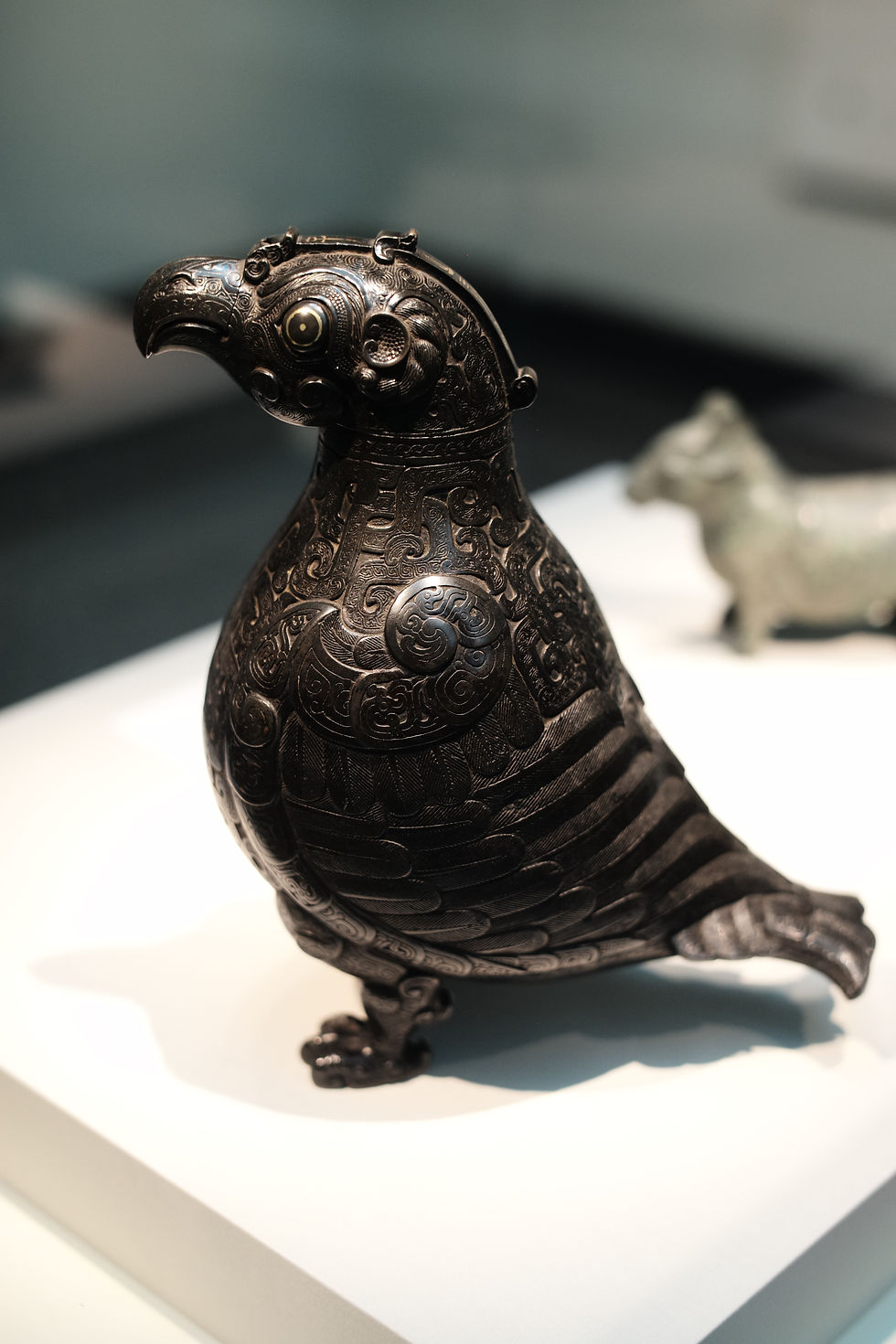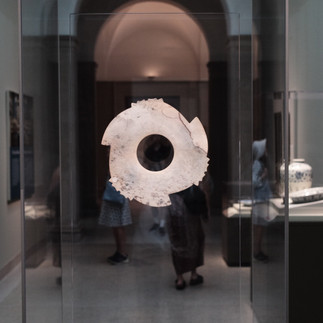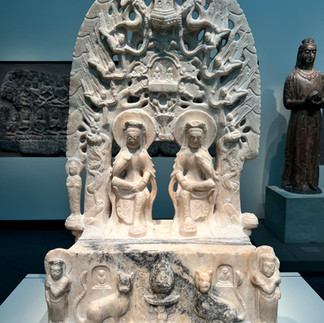展覽筆記 vol.20 華盛頓弗里爾博物館的中國藝術精選 - Selected Chinese Arts from the Freer Gallery, Washington DC.
- SACA
- Jun 2, 2024
- 4 min read
Charles Lang Freer(Freer),查爾斯·朗·弗利爾:偉大的收藏家和贊助人。 1906年,弗利爾將他的大量藏品捐贈給了史密森學會,隨後弗利爾與羅斯福總統取得聯繫,並資助美國政府在華盛頓特區建立弗利爾博物館。
弗里爾博物館圖片提供 © 張大為 / all Freer photos copyright © david zhang.
查爾斯·朗·弗利爾 - Charles Lang Freer
“查爾斯·朗·弗利爾(Charles Lang Freer)一生的故事和他作為中國陶瓷收藏家的職業生涯在某種程度上與他的前輩約翰·皮爾龐特·摩根的故事相似。這兩位早期美國收藏家的目標和動機有很多共同之處,但他們的早年生活和他們的教育背景卻截然不同。”
查爾斯·朗·弗利爾(Charles Lang Freer)於1854年出生於金斯敦紐約一個卑微的農業家庭,這是一個位於哈德遜河和卡茨基爾山脈之間的小型北部小鎮。他是六個孩子中的第三個,他的母親在他14歲時去世,為了支持家庭弗利爾去了當地一家水泥廠工作。後來,他成為金斯敦綜合商店的一名職員,他的勤奮給當地一位名叫Frank J.Hecker的鐵路經理留下了深刻的印象。
Charles Lang Freer
“簡而言之,弗利爾是一個白手起家的人,沒有任何優勢,沒有社會關係和太多的教育。通過勤奮和努力,他在世紀之交成為百萬富翁。1899年春天,弗利爾決定退休,將積累的財富放入投資計劃,轉身投入了鑒賞和收藏事業。”
年輕時的弗利爾在他一擁有足夠的資金便謹慎地開始了收藏。與摩根相同的是,他並沒有從亞洲藝術開始,而是購買了現代歐洲蝕刻和版畫,很快他就建立了一個大收藏。當有人把詹姆斯·麥克尼爾·惠斯勒(James McNeill Whistler)的作品介紹給弗利爾時,他被馬上便被這種藝術形式所深深吸引。弗利爾從1887年開始收藏惠斯勒的作品,整個收藏活動持續了一生;但與此同時他很快就開始收藏現當代美國油畫作品。
從1906年到1919年弗利爾去世,弗利爾捐贈的藝術品總數增加了四倍以上。最初捐贈的惠斯勒和其他60位美國藝術家的1000件西方作品,加上後來收藏的1400多件東方藝術品(包括950中日陶瓷),整個序列東西平衡。1919年弗利爾死後,捐贈給博物館的中國陶瓷最終名單共計526件。
“1919年,弗利爾給國家的中國陶瓷收藏品的內容調查顯示,他的收藏與約翰·皮爾龐特·摩根的收藏截然相反:沒有明清瓷器,弗利爾幾乎完全把精力集中在宋代和早期的作品上。”
Charles Lang Freer (Freer), Charles Lang Freer: great collector and patron. In 1906, Freer donated his extensive collection to the Smithsonian Institution, and then Freer contacted President Roosevelt and financed the U.S. government's establishment of the Freer Museum in Washington, DC.
Charles Lang Freer - Charles Lang Freer
“The story of Charles Lang Freer's life and career as a collector of Chinese ceramics is in some ways similar to that of his predecessor, John Pierpont Morgan. These two early American collectors had much in common in their goals and motivations, but their early lives and their educational backgrounds were very different.”
Charles Lang Freer was born in 1854 to a humble farming family in Kingston New York, a small upstate town between the Hudson River and the Catskill Mountains. The third of six children, his mother died when he was fourteen, and to support his family Freer went to work in a local cement factory. Later, he became a clerk at the Kingston General Store, where he impressed a local railroad manager named Frank J. Hecker with his diligence.
“In short, Friel was a man who started from nothing, with no advantages, no social connections and too much education. Through hard work and diligence he became a millionaire at the turn of the century, and in the spring of 1899, Friel decided to retire, put his accumulated wealth into an investment program, and turned to the business of connoisseurship and collecting.”
As a young man, Friel cautiously began collecting as soon as he had enough money. In common with Morgan, he did not start with Asian art, but instead purchased modern European etchings and prints, and he soon built a large collection. When the work of James McNeill Whistler was introduced to Friel, he was immediately captivated by the art form. Freer began collecting Whistler's works in 1887 and continued to do so throughout his life; however, at the same time, he soon began collecting modern and contemporary American paintings.
From 1906 to his death in 1919, the total number of works of art donated by Freer more than quadrupled. The initial donation of 1,000 Western works by Whistler and 60 other American artists, combined with more than 1,400 Oriental works of art (including 950 Chinese and Japanese ceramics) from the later collection, balanced the entire sequence east-west. the final list of Chinese ceramics donated to the museum after Friel's death in 1919 totaled 526 pieces.
“A survey of the contents of the Chinese ceramics collection given to the State by Friel in 1919 revealed a collection that was the polar opposite of John Pierpont Morgan's: there were no Ming or Qing porcelains, and Friel concentrated almost exclusively on Sung and early works.”










































Comments